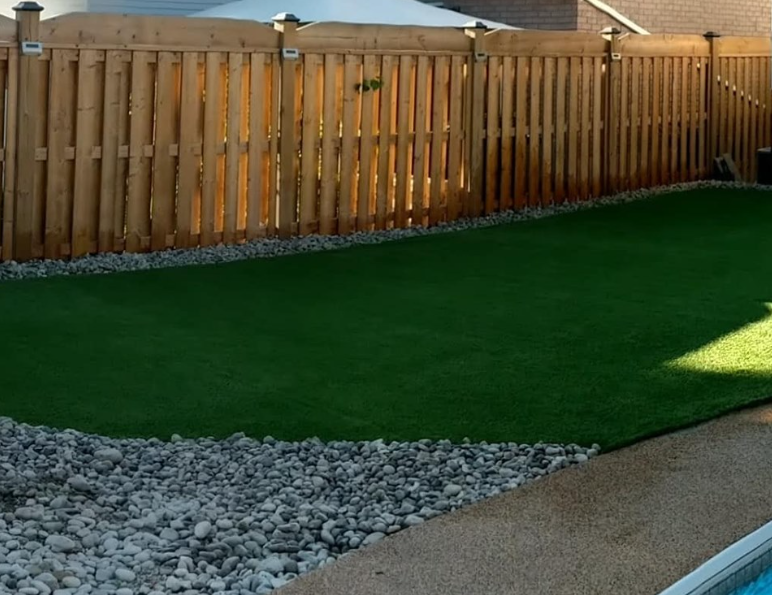Synthetic grass was first invented in the 60s, and at that point, there was only one product and brand available, and it was AstroTurf. Over the past several decades, many artificial grass companies have been created, and hundreds of various types and brands of synthetic grass are now available. There are so many options these days, that choosing the right type of artificial grass for your needs can be overwhelming for many homeowners.
While there is a lot of information available about various forms of artificial grass and which types are best for certain uses, one thing that everyone looks for in their turf is a realistic appearance. With so many different varieties of synthetic grass, it can be difficult to know what to look for and how to make a decision.
Read on to learn about how to find the right artificial grass for your outdoor space, as well as some basic maintenance and cleaning tips to keep your turf looking fresh and gorgeous for years to come.
How Can You Tell if Artificial Grass is Good Quality?
The artificial grass industry has come so far since its invention, and many of the varieties available today are almost identical in appearance to natural grass. What exactly makes some types of synthetic turf appear so realistic comes down to modern manufacturing approaches and a few important factors.
Blade Shape
One of the biggest secrets to realistic-looking synthetic grass is the variety and diversity of the shape and texture of each individual grass blade. Artificial grass blades are created to mimic the appearance of natural grass, displaying variations in shape, length, and width.
Blade Texture
Most forms of artificial grass available today are made from materials such as nylon or polypropylene, which create a soft and resilient texture that is similar to that of natural grass. They are designed to mimic not only the appearance of grass but also the feel of it thereby providing as close a tactile experience to nature as possible.
Colour Variability
Another element of high-quality synthetic grass is its colour and variability. The most natural-looking types of artificial turf possess various shades of green, from deep forest green to a light yellow-green shade, as well as some yellow or light brown fibers. This replicates the way sunlight reflects off of natural grass and breaks up the monotony of one uniform colour, creating an organic and vibrant appearance.
Blade Density and Height
The density and height of the turf also play a major role in creating a life-like appearance. Turf with a high density means that there are more blades per square inch, creating a lush and luxurious look to your lawn. The ideal height of the turf depends on how the space will be used and which type of grass it mimics, but it should be somewhat uneven to replicate the appearance of blades growing at various rates and lengths.
Can you Vacuum Artificial Grass?
Vacuuming artificial grass is generally not recommended, as it can remove important infill. Infill is a product that is placed between the blades to help them stand up straight and is often a granular material. Most types of synthetic turf have an infill of some kind, which is important to maintain the appearance and protect your turf.
Can you Pressure-Wash Artificial Grass?
If you happen to have a variety of artificial grass that doesn’t contain infill, it can be safely pressure washed. Because infill for synthetic turf is a loose, granular material, it is easily disturbed by power washing as it is by vacuuming. Power washing will likely spread the infill unevenly across your lawn or may even blow it out of the turf area altogether.
Most homeowners have synthetic grass with infill, which means it is not recommended to vacuum or power wash your turf. Instead, consider cleaning your lawn with a rake to remove large bits of debris, a leaf blower, and a light rinse with your garden hose. In many cases, regular rainfall is enough to keep your artificial grass clean and looking great.
How Long Should Artificial Grass Last?
One of the most celebrated benefits of artificial grass is its long life span. Most people can plan to enjoy their synthetic turf for 20 years or more, making it a valuable investment that saves you time and money.
To enjoy the longevity of your artificial grass, it is essential to carefully and properly maintain your lawn. While it is widely considered to be a low-maintenance option, there are still some maintenance requirements that should be met to optimize the lifespan of your artificial grass.
If you want to learn more about which artificial grass is right for you and your property or receive a quote, contact your friendly landscaping experts at Mountview Services today!

